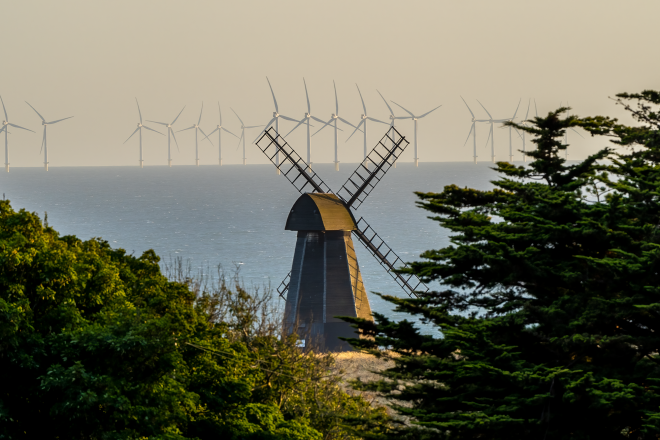Securing benefits for South Downs National Park from Rampion 2 scheme
August 21, 2025
 Principal Planning Officer Vicki Colwell writes about concerted efforts by the National Park and partners to secure significant mitigations from the Rampion 2 development – and all the hard work and negotiations reaped rewards.
Principal Planning Officer Vicki Colwell writes about concerted efforts by the National Park and partners to secure significant mitigations from the Rampion 2 development – and all the hard work and negotiations reaped rewards.
It has been almost five years since the SDNPA first got involved in the proposals for the extension to the existing Rampion Windfarm.
In April this year, the Secretary of State approved the Development Consent Order that will enable up to 90 further turbines to be installed off the Sussex Coast, reaching a maximum height of 325m, with the underground cables to connect to the National Grid running up from the coast, through the National Park, to a substation near Cowfold.
As Rampion 2 is ‘nationally significant infrastructure’, or an NSIP for short, it goes through a different planning process, where we are an interested party, rather than the decision maker. Typically, these projects spend one to two years in pre-application discussions and public consultation, before being submitted to the Planning Inspectorate for Examination.
An Examination takes a maximum of six months and is mainly a written process, interspersed with in-person hearings. This leads to some extremely tight deadlines, which often involve trawling through thousands of pages of information in order work out what has changed.
Chief among our concerns was: ‘can a route through the National Park be avoided?’

If not, what is being done to mitigate and compensate for the harm going through the protected landscape? This still hadn’t been properly addressed by the time we were in examination hearings.
To put it into a bit of context, the cable corridor during construction could be up to 40m wide, going through 100+ hedgerows and tree belts, drilling under Ancient Woodland and Local Wildlife Sites and cutting across areas of nationally-significant archaeological potential. Those ‘temporary’ effects are going to be felt for years after the construction has finished.
One of the key tasks in this (and I would argue most) project was to put together a team of colleagues to consider the effects and they all played major roles in the run up to and during the examination itself.
Led by the Principal Planning Officer for NSIPs, a team of officers across the Authority (ecology, landscape, cultural heritage, transport, access, rangers) considered the effects of the project and what measures needed to be taken avoid/mitigate/compensate for the scheme’s impact.
They helped shape the scheme so that whilst it doesn’t avoid the National Park, it is going to be providing better mitigation than we started with.
This includes direct responses to:
- Seascape, Landscape and Visual Effects
- Traffic and Access
- Soils and Agriculture
- Minerals and Ground Conditions
- Historic Environment
- Ecology / Biodiversity.
On top of that, we have also secured a compensation fund of £3.5million to deliver projects identified as capable of compensating for the residual effects of the development and which can further National Park purposes.
This will be paid over the course of 30 years from when Rampion 2 becomes operational and will help us deliver a wide range of projects. This fund and the pressure we applied to get better justification and changes to the mitigation played a key role in the Examiner’s recommendation and the final decision (all 800 pages of them).
Our work does not stop now – even though we don’t make the decision, we are responsible for ensuring all the Requirements of the decision are fulfilled within the National Park before, during and after the construction process.
